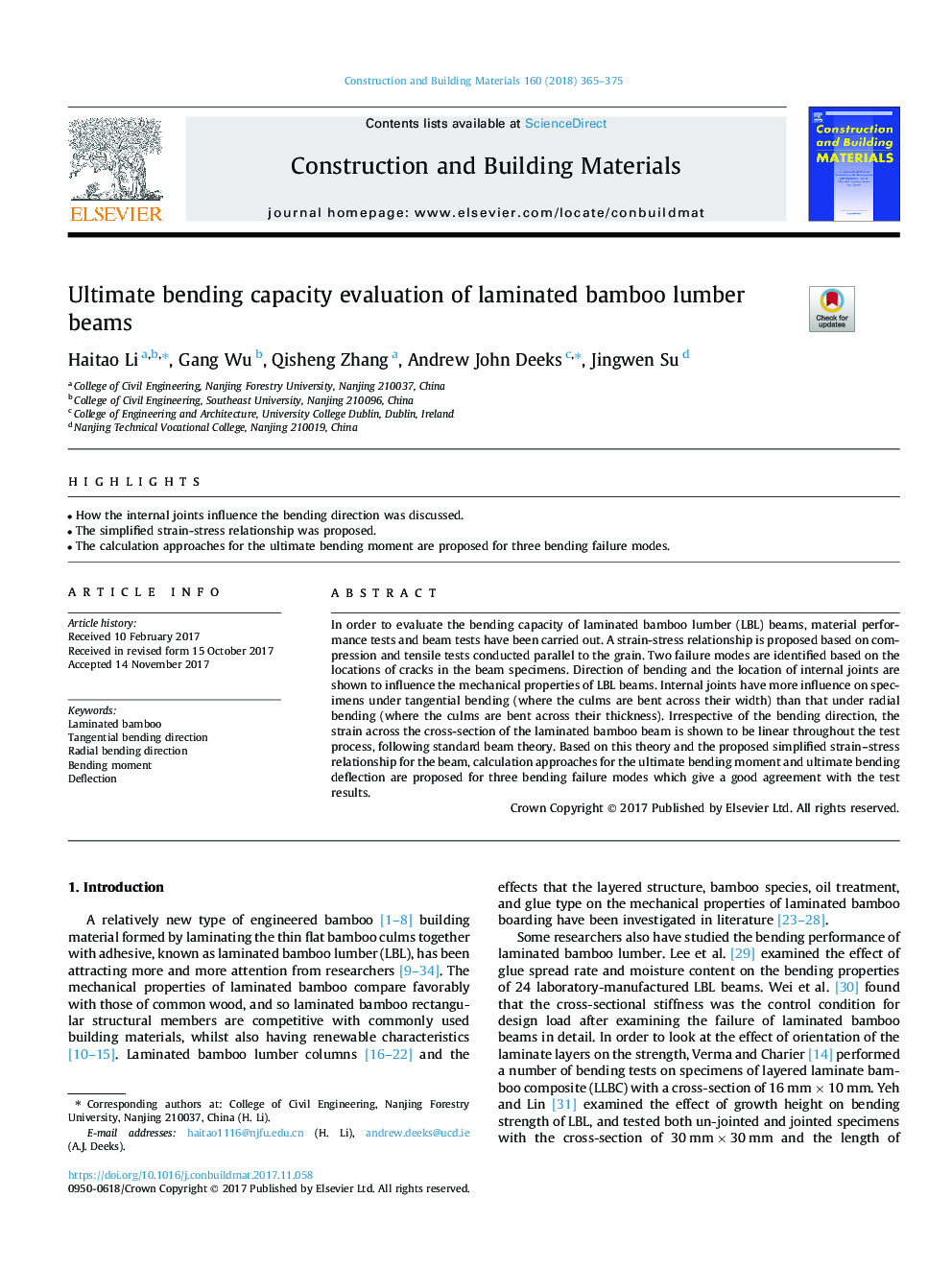| Article ID | Journal | Published Year | Pages | File Type |
|---|---|---|---|---|
| 6717046 | Construction and Building Materials | 2018 | 11 Pages |
Abstract
In order to evaluate the bending capacity of laminated bamboo lumber (LBL) beams, material performance tests and beam tests have been carried out. A strain-stress relationship is proposed based on compression and tensile tests conducted parallel to the grain. Two failure modes are identified based on the locations of cracks in the beam specimens. Direction of bending and the location of internal joints are shown to influence the mechanical properties of LBL beams. Internal joints have more influence on specimens under tangential bending (where the culms are bent across their width) than that under radial bending (where the culms are bent across their thickness). Irrespective of the bending direction, the strain across the cross-section of the laminated bamboo beam is shown to be linear throughout the test process, following standard beam theory. Based on this theory and the proposed simplified strain-stress relationship for the beam, calculation approaches for the ultimate bending moment and ultimate bending deflection are proposed for three bending failure modes which give a good agreement with the test results.
Related Topics
Physical Sciences and Engineering
Engineering
Civil and Structural Engineering
Authors
Haitao Li, Gang Wu, Qisheng Zhang, Andrew John Deeks, Jingwen Su,
